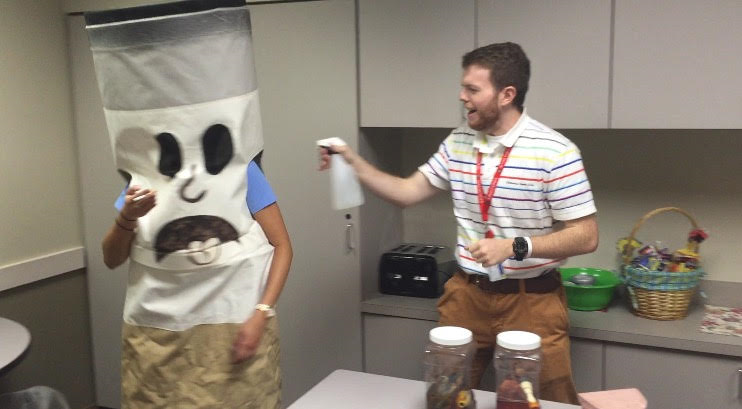Connecting with Clients
 In the last 10 months, I have been responsible for educating nearly one thousand adolescents about decision making, goal setting, conflict resolution, relationships, substance abuse, and even brain development. Every one of those individuals has impacted me on both a personal and professional level. Each of these interactions has shaped my perception of public health, but one encounter in particular was crucial to my growth and experience.
In the last 10 months, I have been responsible for educating nearly one thousand adolescents about decision making, goal setting, conflict resolution, relationships, substance abuse, and even brain development. Every one of those individuals has impacted me on both a personal and professional level. Each of these interactions has shaped my perception of public health, but one encounter in particular was crucial to my growth and experience.
On a weekly basis I facilitate a Tobacco Education Group for middle school and high school students who have been caught with tobacco products on school property. There is one student; I’ll refer to him as “Simon,” who was difficult to engage early on in my term of service. After receiving some advice from my Site Mentor and Health Education Supervisor, Kim Terry, I changed my approach from spitting out different facts about tobacco to asking more questions about Simon’s other interests: his part-time job, his love of football, his dirt-bike, and his girlfriend. Together, we identified how his friends on the football team might influence him to use tobacco, and how they might feel pressured as well. We talked about how adults at his part-time job use tobacco and offer it to him freely, and how he could develop skills to feel comfortable refusing adults’ offers. From our discussions, Simon found that working on his dirt-bike is a good stress-reliever and helps take his mind off his worries. He asked his girlfriend how she felt about his use of smokeless tobacco, and she said she found it disgusting but was too afraid to tell him how she felt. This two-way communication strategy was a leap forward in my personal and professional development which allowed me to be an effective facilitator, and it also helped me further enjoy my service.
I learned to start off every four-week course with the same speech: “This is not punishment. This is an opportunity to reflect on our decisions. This is a place to share our feelings and thoughts about why we use harmful substances.” I use the terms “our” and “we” frequently because language is extremely important. I use this specific language to make a connection to the students. After building trust, I encourage the students to critically examine their situations, and how I can help them make better choices. Through this experience I have learned that I need to facilitate discussion and be their equal, rather than lecturing students on a topic which they’ve more than likely already received a stern talking-to from parents, teachers, school officials, and court officials. Although it’s important that the students understand the specific facts and statistics, I have come to realize that they will not take an interest unless they understand why their decision to use dangerous substances is influenced by home life, school, and friendships.

This blog post was written by NFHC member Danny Glenn.
Danny serves at FDOH- Baker County as a Health Educator.